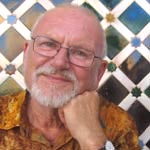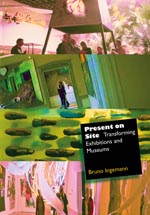
| Present on Site: Transforming Exhibitions and Museums |
Gaea Leinhardt and Karen Knutson’s book, Listening in on Museum Conversation, begins with the statement, “For both of us, museums are fascinating and enchanting places. They are places of enormous beauty, places of transport, and places that reflect both the most conservative views of the status quo and the most provocative new ideas of our time” (Leinhardt & Knutson (2004:vii). And they continue, “… we share here our own personal identification with the museums of our childhood and adolescence”. This book is a collection of articles written over a period of ten years. My membership in the Museology Network since 1998 has been a vital impetus for my research because the network has provided a forum for the presentation and discussion of papers and articles of relevance to the highly influential Scandinavian journal Nordic Museology, which originally published some of the chapters of this book in Danish. Functioning as a fruitful medium, work in the network led to the anthology New Danish Museology (2005), which frames museums and exhibitions as an idea, analysing the ideological foundation for the museum and taking a critical look at the visitor perspective and communication strategies for collections and exhibitions.
Exhibitions by the author The following 19 exhibitions were presented in Denmark from 1963 to 2012: (1963) Participated with woodcuts in a group exhibition by art academy students; Art Society, Grenaa (1964) Solo exhibition of 20 linocuts and woodcuts in black and white and colour; Gallery Kaage, Horsens (1965) Solo exhibition of 30 linocuts and woodcuts; Horsens College of Continuing Education (Horsens Statsskole) (1965) Participated in a group exhibition celebrating the jubilee of Danish experimental poetry and the visual arts magazine Hvedekorn; Gallery of Superlove, Copenhagen (1970) Some Information about the Earth We All Live On – extensive exhibition with the environmental activist group NOAH involving more than 30 participants; Copenhagen Town Hall (1972-1974) Amager Common 1972 – temporary advocacy exhibition comprising 20 chipboards with black and white photographs and text on the Gypsies and their circumstances in Denmark. Travelling exhibition shown at forty libraries in Denmark (1975) North/South – temporary wall poster exhibition comprising 6 huge wall papers (160 x 100 cm) concerning growth, exploitation, energy crises, relations to the third world – made for Noah/Danida. Travelling exhibition to public libraries and schools. (1986) His Master’s Voice: The Exhibition Handbook Model Exhibition – project for a large exhibition about the media and media use. The Exhibition Handbook (1986) presents and discusses this exhibition in detail as an example of the work process of an exhibition (9 – 31 Jan. 1988) Into the Media: An Introduction to Education – presentation of 17 various forms of education in a broad range of media; the Round Tower, Copenhagen (1990-92) Biotechnology – travelling poster exhibition sponsored by the Danish Board of Technology comprising eight posters on a topical issue. Five hundred sets displayed at various public libraries and places of study in Denmark (6 June – 25 Oct. 1993) The Journey – opening exhibition. Shaman Tower installation and slide show called The Journey of the Soul; the National Museum of Denmark, Copenhagen (1998-2002) The Drifting Sand – multi-screen show covering over three-hundred years of history of drifting sand; Han Herred Nature Centre (2003- ) Museum: The Three Monkeys – online changing exhibition of hear-no-evil, speak-no-evil, see-no-evil monkey collection: (13 Nov. 2003) Places Speaking – Speaking Places – exhibition and seminar by six researchers on the visual culture of Paris. My contribution was nine large panels with panorama photos of various McDonald’s locations in Paris; Roskilde University, Roskilde (2003) The Model Exhibition – 1:10 scale model with small fibre lights and eleven miniature paintings presented together with the original painting. Project subsequently turned into a video and presentation; Project for Gallery Clausen, Copenhagen. Not realised (Aug. – Oct. 2005) Nine Hidden Paintings – solo exhibition; Hvalsø Cinema and Culture Centre (4 May 2006) See, 1957 – The Volkswagen of the Air – exhibition and seminar by five researchers exploring visual culture in1957. Video installation on values presented in the men’s magazine Popular Mechanics; Roskilde University, Roskilde (19 Nov. 2010 – 31 Dec. 2012) Becoming a Copenhagener – activist exhibition, film and exploration of what occurred on Amager Common in 1972; focus on immigrants as a catalyst of and pre-condition for change and the growth of Copenhagen; Museum of Copenhagen |
| Comment |
![]()
You can contact the author by sending a mail to bruno@present-on-site.net

